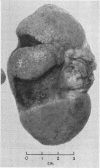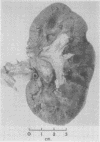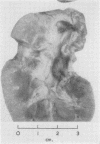Abstract
The thesis put forward by Hodson (1959) from radiological evidence that renal scars due to ischaemia show a narrowed parenchyma associated with a normal calyceal pattern, whereas in focal pyelonephritic scars the narrowed parenchyma is associated with clubbing of the calyx in the affected area, has been investigated anatomically. The thesis finds considerable support and the importance of careful examination of the calyceal system in scarred kidneys is stressed. In only one of 23 examples in which all the circumstantial evidence of the case pointed to an ischaemic scar was there any deformation of the renal calyx. In 13 of 14 examples in which the evidence pointed to chronic pyelonephritis there was clubbing of the calyx associated with the scar.
Full text
PDF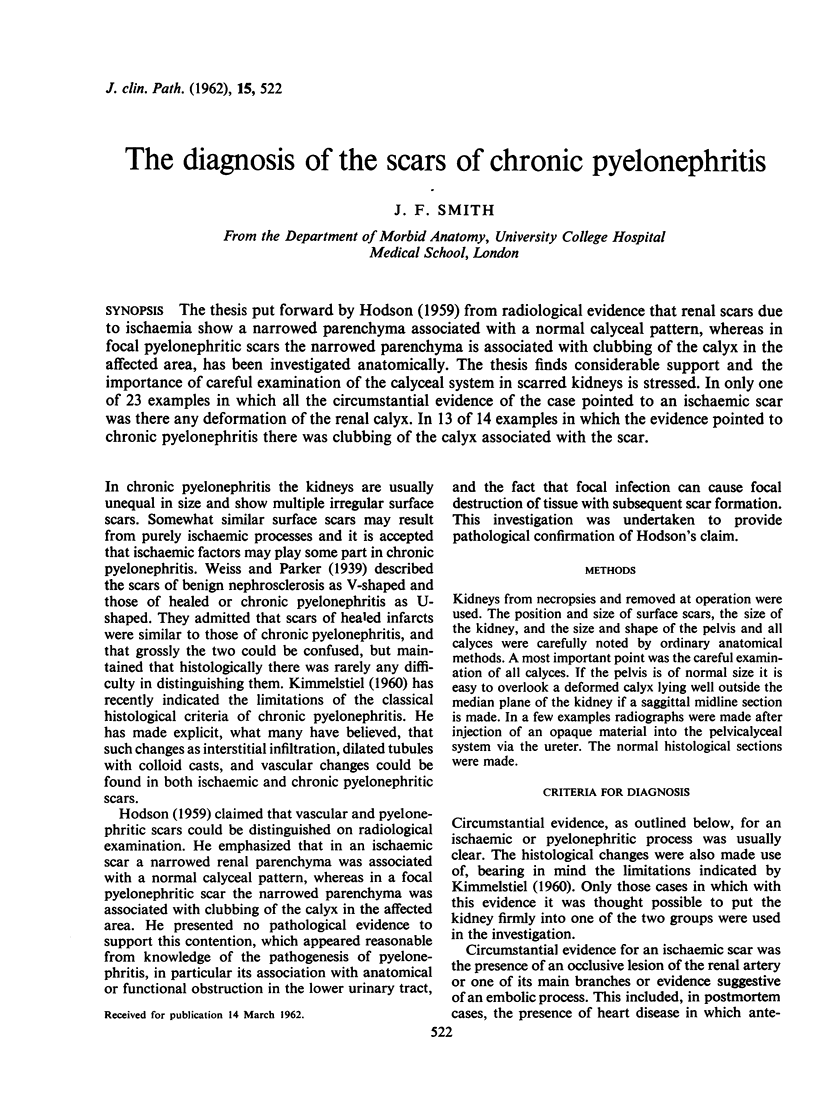
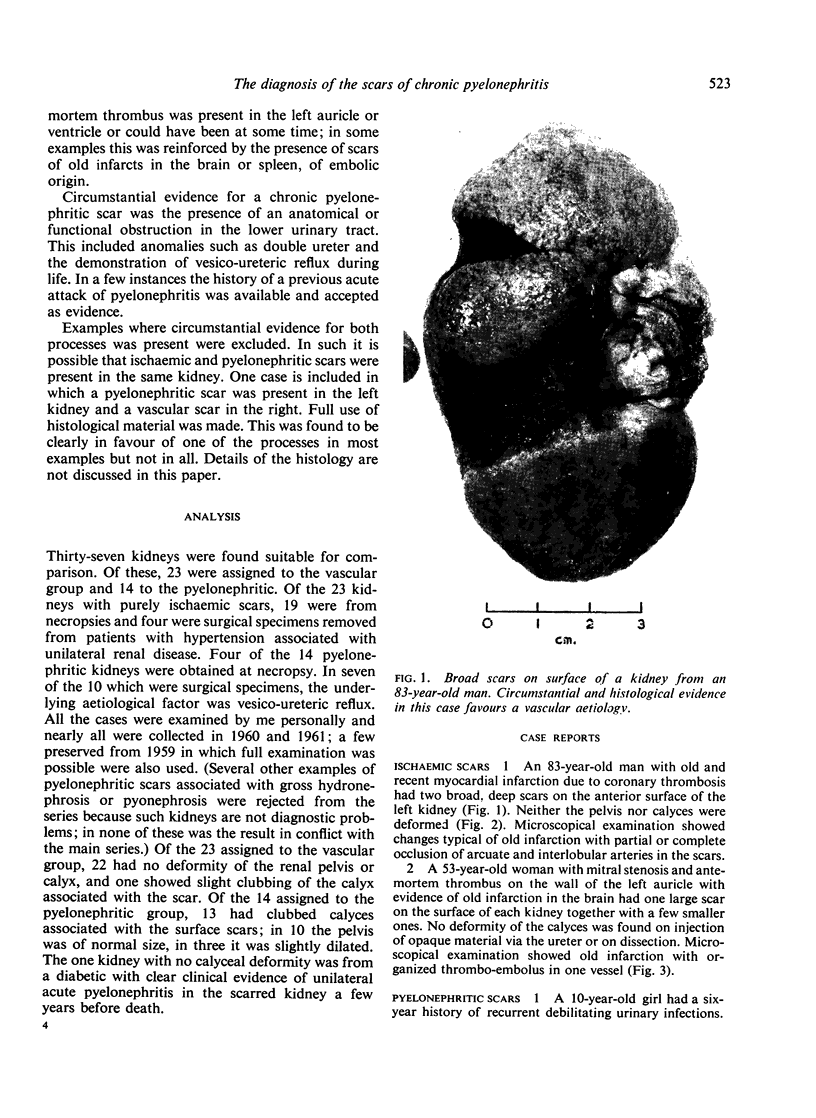
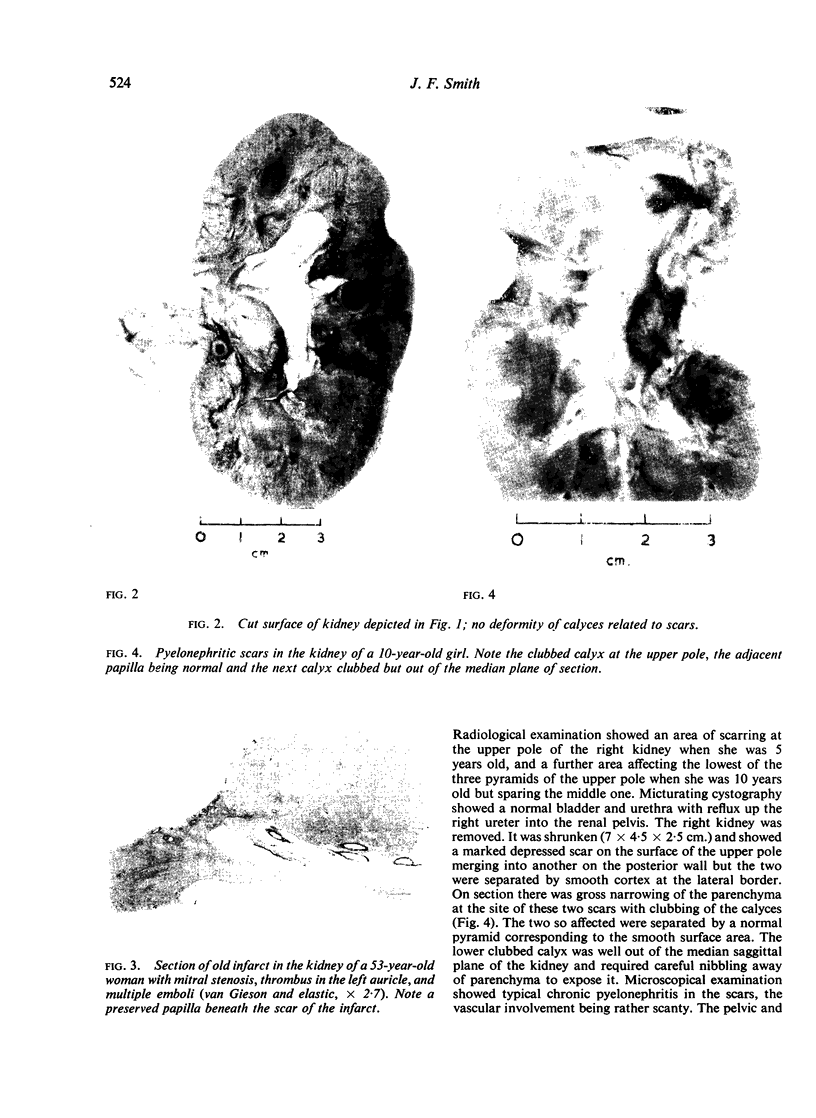
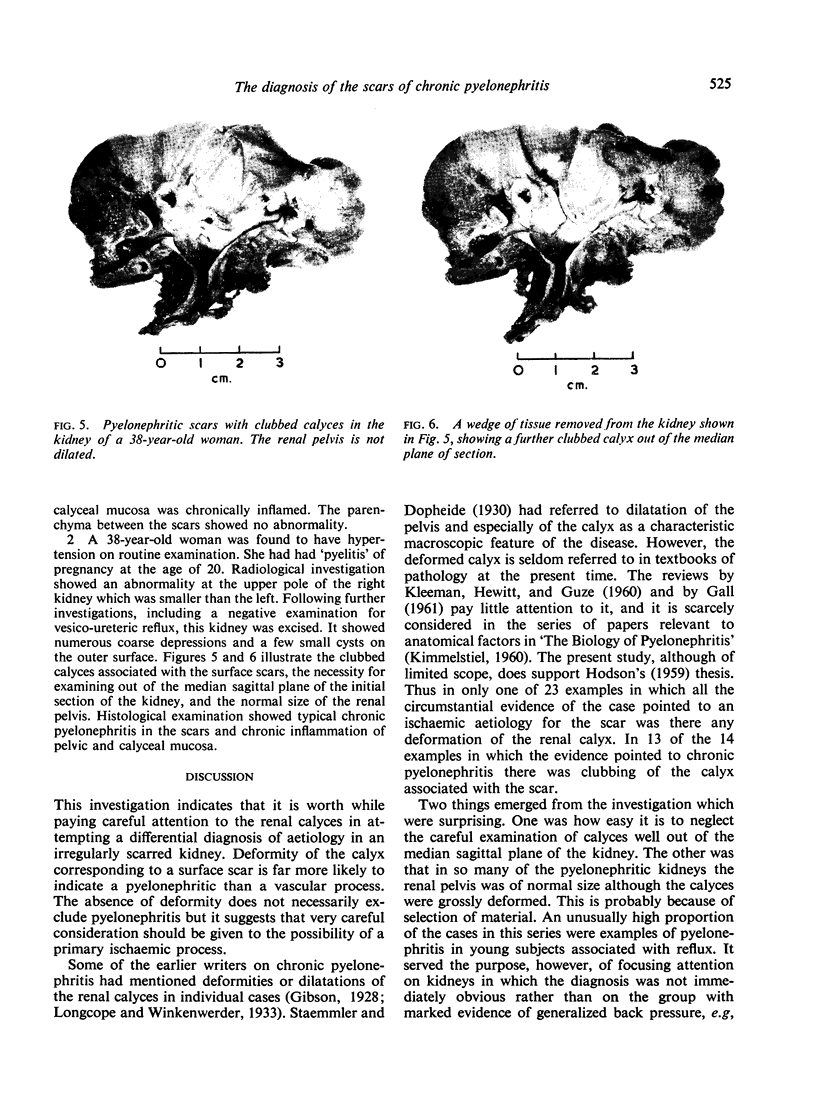
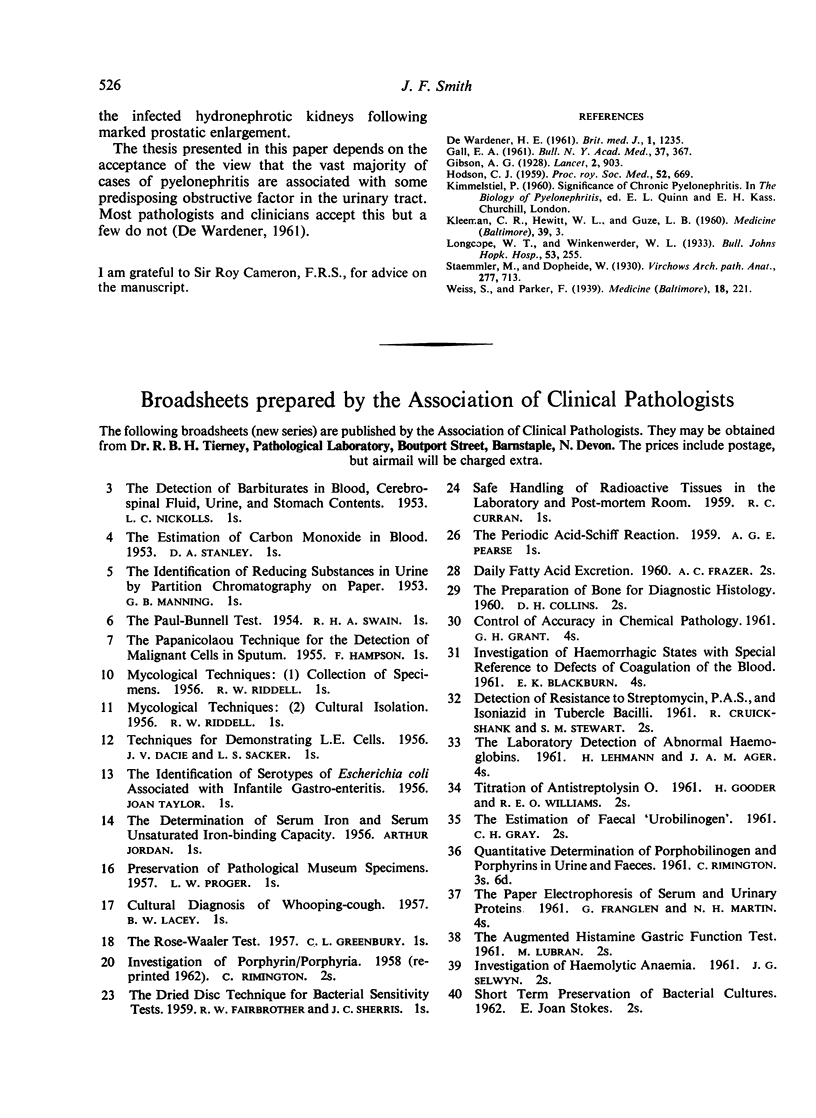
Images in this article
Selected References
These references are in PubMed. This may not be the complete list of references from this article.
- GALL E. A. Pyelonephritis. Bull N Y Acad Med. 1961 Jun;37:367–382. [PMC free article] [PubMed] [Google Scholar]
- HODSON C. J. The radiological diagnosis of pyelonephritis. Proc R Soc Med. 1959 Aug;52:669–672. doi: 10.1177/003591575905200819. [DOI] [PMC free article] [PubMed] [Google Scholar]



